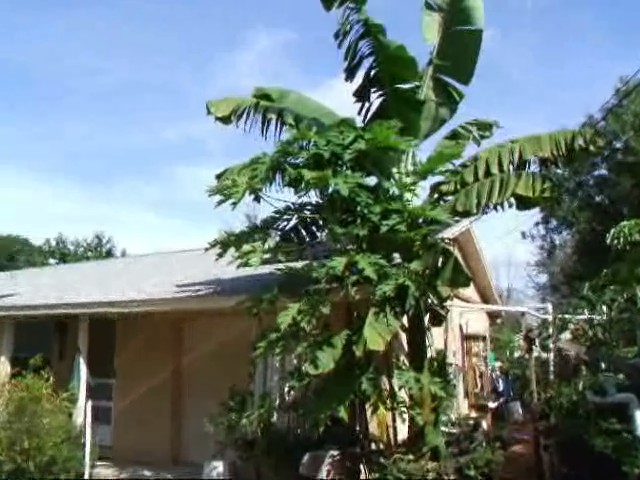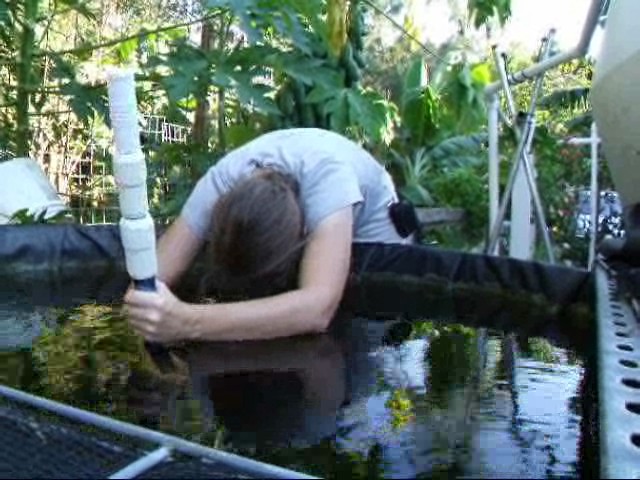Originally posted by TCLynx on AGC, June 2, 2010
There is much comment about what might be needed to add to an aquaponics system to keep the plants happy. Once a system is mature, it will require less special attention, however, new systems do often need a little bit of something something to help get the plants off to a better start. The most common additive is sea weed extract. Original Maxicrop is the one I know of here in the USA. Make sure it is just sea weed extract and NOT the sea weed extract plus fish emulsion. We don’t want to be overloading the bio-filter by adding ground up fish to it. I believe the fertilizer ratings on the Original Maxicrop is 0.1-0-1 It provides mainly potassium and trace minerals. There is also a Maxicrop plus Iron which some people use with success though I have never tried it. How much to use, well for my system I’ve sometimes used as much as a quart of Maxicrop every couple weeks. My system has about 700 + gallons of fish tank and 1400 + gallons of grow bed.
Iron deficiency is a common problem for plants in Aquaponics but most of the time it is actually due to high pH keeping the plants from effectively using the Iron. Chelated Iron is usually the best choice for supplementing an aquaponics system since the chelation helps keep the iron in a more usable form for the plants even at the higher pH. http://en.wikipedia.org/wiki/Iron_chelate I’m sorry to say I do not have a good source for this to recommend.
For those who can’t get their hands on Chelated Iron, I would suggest diluting a liquid iron supplement according to the directions and spray the plants (in the evening to avoid burning the plants) but be careful, most Iron supplements stain.
I also must admit that before I was able to get my hands on Maxicrop, I resorted to using potassium chloride to supplement potassium in my system. This won’t take care of the need for trace nutrients but it will take care of potassium. Another supplement that will take care of potassium as well as the bicarbonate to buffer the pH would be potassium bicarbonate. I’ve never used it myself but I’ve heard of people getting it at wine making supply places. For those who want to be a bit more organic, you can bury the peels of organic bananas or the whole banana in the grow beds for the potassium supplement.
For fish health, salt is often used. I’ve generally used the cheapest solar water softener salt or pool salt. Be sure to dissolve it completely before dumping into the fish tank. Undissolved salt crystals sitting on the bottom of the fish tank can burn a fish when it rests against it. When we measure salt levels, we generally speak of parts per thousand for salt. 1 ppt should be in a system that is cycling to help protect fish from nitrite. 2 ppt of salt can help sooth fish and yet is still low enough not to affect most plants. 3 ppt of salt can help against some diseases or parasites. For some things, a change of 3 ppt would be needed through and at this point people should research the tolerances of their particular fish. Tilapia can take very salty water but catfish and blue gill can’t handle more than 5 ppt of salt. Since I am growing catfish, I don’t go over 3 ppt of salt in my system and I normally keep the salt level very low.
What amount of salt to put in? Well that is much easier when measuring in metric but for dealing with gallons and pounds, I hope these numbers will help.
I found a page that gives some info on salt.
But the site seems to be gone now
The page was really geared for koi ponds but I was able to figure out
dosing rates using some of their info.
Like
4lb of salt per 100 gallons will give 5ppt
1000 lb of water is aprox 125 gallons
100 gallons is aprox 800 lb
So
1 lb of salt per 100 gallons = 1.25 ppt
1 lb of salt per 125 gallons = 1 ppt
Moving on
there is one more common supplement that most of us don’t even think of as a supplement,
Calcium carbonate, Shell grit, or lime basically the stuff most eventually have to add to buffer their system to keep the pH from dropping too low. This only needs to be added as the pH warrants but it is good to have on hand and add it before the pH drops to the bottom of the chart (once it gets down to the bottom color, there is now way to know how low it really is without getting some other method of testing.)
Anyway, those are the tried and true supplements. Many people have discovered that they don’t need to supplement much at all once the system is mature, provided they use high quality feed and keep their pH in line.





One word of caution on the salt, some plants will not tolerate anywhere close to 1 ppm of salt and will die. Strawberries are a good example of this, so do not add any salt to a system if you want to grow strawberries. If you still want to “salt” you fish for medical reasons or during quarantine consider using a separate tank for this. Some recommend using a higher salt concentration for a hour or two then move the fish back to unsalted water. Murry has details on this on his blog I believe.